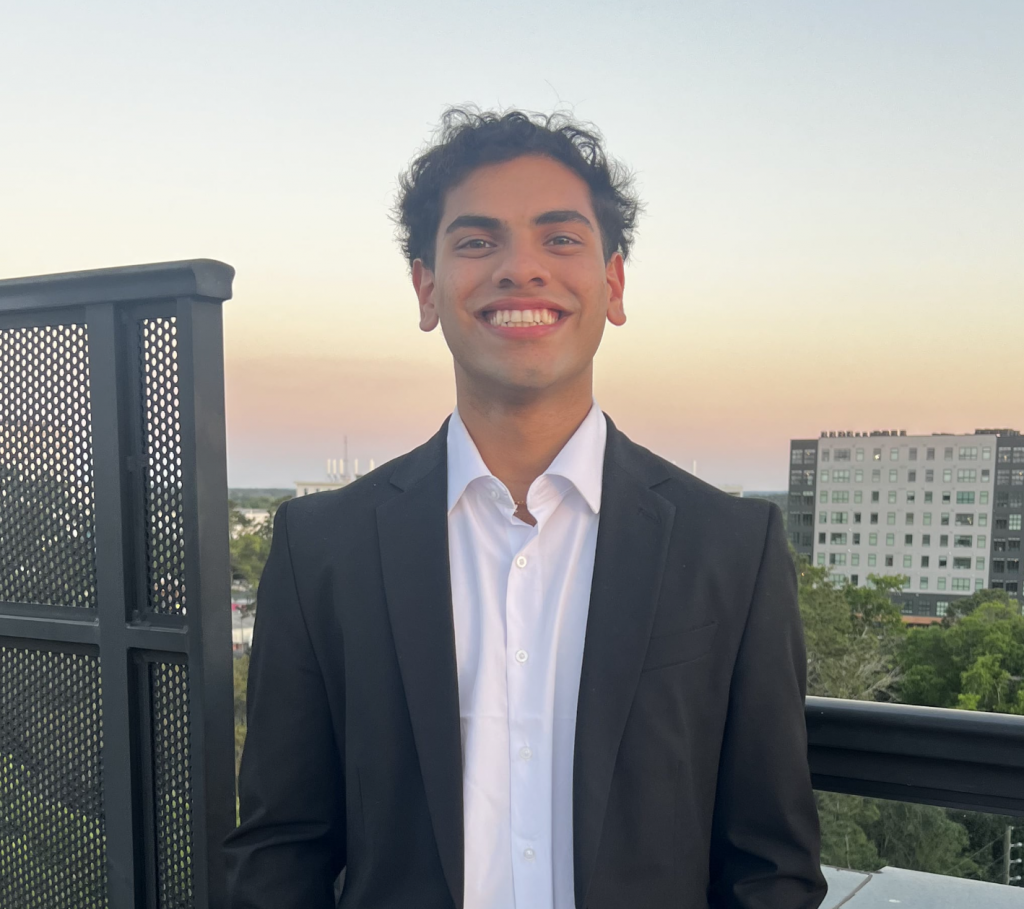From Curiosity to Capability: How the Innovation Academy Transformed My Path
When I applied to the University of Florida, I knew I wanted to be a pioneer in artificial intelligence—someone who could harness technology to bring about meaningful, positive change. However, when I was accepted into the Innovation Academy (IA), I was honestly unsure about what it entailed. I didn’t expect it to play such a pivotal role in shaping my mindset, building my skills, and expanding my confidence. Now, looking back, I realize IA was one of the most defining aspects of my first year.

My first step on campus was to get involved. I applied to the Freshman Leaders of Engineering Group (FLEG) and was thrilled to be accepted. Through FLEG, I found a tight-knit community of driven, passionate engineers who inspired me to push beyond my limits. That sense of community and support would soon echo in my experience with IA as well.
In the spring, I enrolled in IDS1940: Creativity and Design Thinking for Innovation. It was unlike any class I had ever taken—not just about lectures or grades, but about learning through doing. At first, I struggled. I vividly remember our first major assignment: designing a name tag to be laser-cut in Adobe Illustrator. I was overwhelmed and close to giving up, but I decided to simplify my approach. With persistence, I managed to complete the project—and for the first time, I truly saw what I was capable of when I committed myself to solving a problem creatively.
Another central turning point came when we were tasked with designing an engaging badging system for the Cade Museum’s “Inventivity” framework. I knew nothing about children’s museums or badge-based learning. I didn’t even know where to begin. But instead of backing away, I dove in. I reached out to museum staff, conducted interviews to understand how children learn, and collaborated with my team to model our badge system using Fusion 360. We even got to present our work directly to the museum staff—and we won the People’s Choice award for best badging system! It was a decisive moment of validation, one that reminded me that innovation isn’t about having all the answers but about being willing to ask questions and learn along the way.
Throughout the semester, IA taught me how to work within ambiguity, how to apply abstract concepts to real problems, and how to lean into creativity rather than avoid it. It also helped me rediscover a love for tinkering. One of my favorite projects involved working with Arduino, and my curiosity drove me to explore beyond the class content. When my team was asked, “How might we use IoT technology to solve issues in hospitality and tourism?” I decided to build a
crowd-detection system using a motion sensor and an ESP32 Arduino board. The idea was to enable staff to monitor the number of people in each area by sending real-time motion data to a custom webpage I had built. I loved being able to tinker with the ESP32, and I was genuinely thrilled the first time I waved my hand over the sensor and watched the webpage update instantly. It was the kind of hands-on learning experience I never expected to have in college and one I wouldn’t have had the confidence or tools to pursue without IA.
All these experiences—FLEG, IDS1940, hands-on design, Arduino—have helped me grow not just as a student but as a thinker, teammate, and problem-solver. IA has shown me that innovation is more than just tech; it’s about taking risks, embracing discomfort, and discovering your potential in the process. I would like to thank Professor Charlie Cummings and Dr. Diane Porter-Roberts for helping me discover my potential.
For anyone considering the Innovation Academy, my most significant piece of advice is don’t wait until you feel “ready.” You’ll never feel 100% prepared, and that’s okay. Jump in, ask questions, try things, and don’t be afraid to fail. Every challenge is a chance to grow, and every idea—no matter how small—can lead to something extraordinary.
My journey is only just beginning, but thanks to IA, I’m equipped with a mindset of curiosity, resilience, and creativity. And that’s something I’ll carry with me wherever I go.
